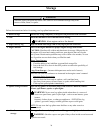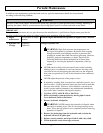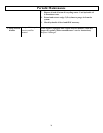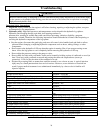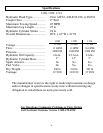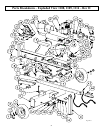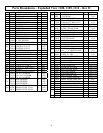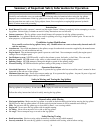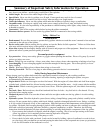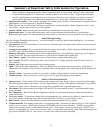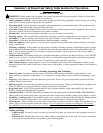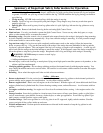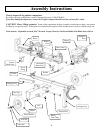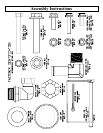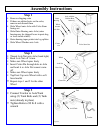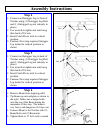
Summary of Important Safety Information for Operation
34
● Tires. Be sure the tires are fully inflated and in good repair before towing the log splitter. When adding air to the
tires, do not over-inflate – serious injury could occur if tire explodes.
● Added length. Be aware of the added length of the splitter.
● Speed Limit. Never tow this log splitter over 45 mph. Faster speeds may result in loss of control.
● Rough terrain. Be extra cautious and drive slowly when traveling over rough terrain.
● Under the influence. Never tow this splitter while under the influence of alcohol, drugs, or medication.
● On public roads. If towing on a public road, make sure to comply with all local, state, and federal towing
requirements. It is the sole responsibility of the purchaser to obtain licensing, trailer lights, safety chains or signage,
as needed to comply.
● Unattended. Turn off the towing vehicle before leaving the splitter unattended.
● Disconnect before operate. Do not use the log splitter while it is connected to the towing vehicle.
Safety – Before Use
Read/instruct
● Read manual. Do not allow anyone to operate the log splitter who has not read the owner’s manual or has not been
instructed on the safe use of the splitter.
● Review safety rules. Before starting this log splitter, review the “Rules for Safe operation.” Failure to follow these
rules may result in serious injury to the operator or bystanders.
● Know how to stop. Be thoroughly familiar with all controls and proper use of the equipment. Know how to stop the
splitter and relieve system pressures quickly if needed.
Personal protective equipment
● Eye protection. Always wear safety glasses or goggles when operating the machine. Pieces of log may fly out and
serious eye injury can occur.
● Boots. Falling logs can crush feet. Always wear safety shoes or heavy boots when operating or helping to load logs.
● Loose/dangling. Loose or dangling apparel can become entangled in moving parts. Never wear jewelry or loose-
fitting clothing.
● Gloves. Wear snug fitting gloves without draw strings or loose cuffs.
● Hearing Protection. The use of ear plugs or other hearing protection device is recommended.
Safety During Inspection/Maintenance
Always inspect your log splitter before each use, and repair as needed, to keep it in safe working condition:
● Engine off. Always make sure the engine is off before cleaning, repairing or adjusting the splitter, except as
recommended by the manufacturer.
● Engine debris. Debris on a hot engine can be a fire hazard. With the engine off, clean debris and chaff from engine
cylinder head, cylinder head fins, blower housing rotating screen, and muffler areas. Avoid contact with hot muffler
.
● Other debris.
Debris on moving parts can cause excess wear. With the splitter engine off, clear debris from moving
parts.
● Fuel tank / lines.
Before each use, check fuel tank and fuel lines for leaks. Any fuel leak is a fire hazard. Fix any
fuel leaks before starting engine.
● Mechanical parts. Check to be sure that all nuts and bolts are tight to make sure the log splitter is in safe working
condition.
● Hydraulic system. Check the hydraulic system (hoses, tubing, clamps/fittings, pump, and cylinder) carefully before
each use. Do not operate the log splitter with frayed, kinked, cracked or damaged hydraulic hoses, fittings, or tubing,
or if oily residue is observed on any of the components. High fluid pressures and temperatures are developed in the
log splitter. Hydraulic fluid escaping through a pin hole sized opening can burn or puncture skin, resulting in wounds
that could cause blood poisoning, infection, disability, gangrene, amputation, or death. Therefore, the following
instructions should be heeded at all times when inspecting or servicing the hydraulic components of the log splitter:
o Do not remove the hydraulic oil dipstick when the engine is running. Hot oil can escape causing severe burns.
Allow log splitter to cool completely before removing hydraulic oil dipstick.
o Do not adjust the pressure setting of the pump or valve.
o Do not check for leaks with your hand. Leaks can be located by holding a piece of cardboard or wood (at least
two feet long) with your hand at one end and passing the other end over the suspected area (wear eye protection).
Look for discoloration of the cardboard or wood.



